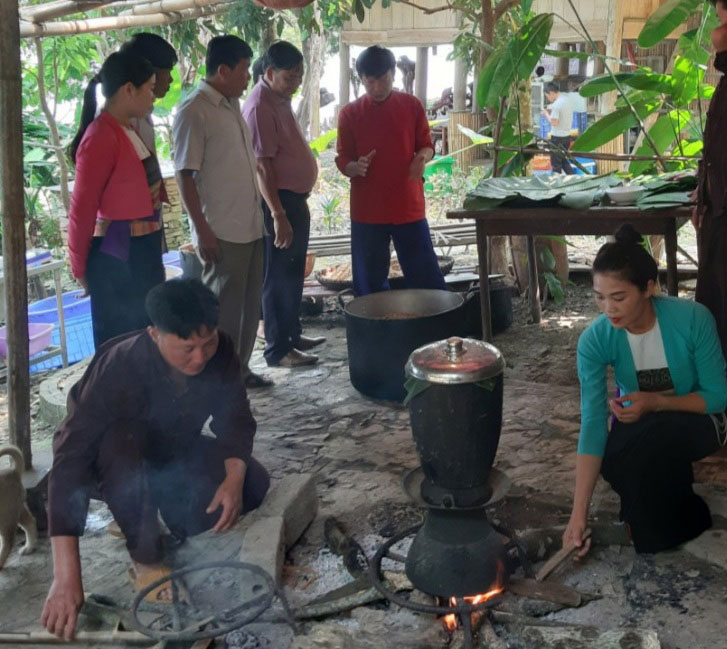



Photo: Hoa Binh Tourism joint Stock Company invests in developing tourism products in Ngoi village, Suoi Hoa commune (Tan Lac).
The ancient land of Muong Bi still retains the distinctive culture of the Muong ethnic group with Cot Co mountain, Khai Ha festival, traditional villages, folk songs, and typical dishes, which have attracted tourists. The district’s mountainous communes have a fresh and cool climate all year round. Muong Bi people are honest and hospitable. Suoi Hoa commune is planned to be located in the core area of Hoa Binh lake national tourist site.
Tan Lac district issued a resolution on tourism development for the 2016 – 2020 period, with a vision to 2030. Accordingly, the district set forth orientations, policies and solutions on conservation, preservation and promotion of cultural values to develop tourism. Especially, the district has restored the unique traditional festivals of the Muong ethnic group such as Lo Son stream fishing festival and Ke Pagoda festival in Phu Vinh commune, gong performances, dances and sports activities, and traditional culinary competitions, thus contributing to raising the awareness of preserving and promoting the cultural values in the community. The district has 19 national and provincial landscapes and archaeological sites, which are drawing attention of tourism development investors.
During the district investment promotion conference held at the end of 2020, many businesses and investors registered, researched, and surveyed the implementation of investment projects in tourism, including resort, ecotourism and community culture projects in Van Son and Suoi Hoa communes. Especially, the lake area commune of Suoi Hoa has seen many projects on building lakeside eco-resorts, hotels, restaurants, theme parks, picnic areas, water sports and eco-farms with total investment worth trillions of VND. Now the district has 10 ongoing tourism projects and four community tourist attractions put into operation.
In the coming time, along with focusing on preserving and promoting Muong ethnic cultural values, the district will continue to strengthen coordination with relevant units to better planning and mobilize resources for investment in infrastructure, especially transport infrastructure, enhance investment attraction, and attract capable businesses to carry out high-quality tourism and community culture tourism projects in the advantageous areas such as Hoa Binh lake and mountainous communes./.